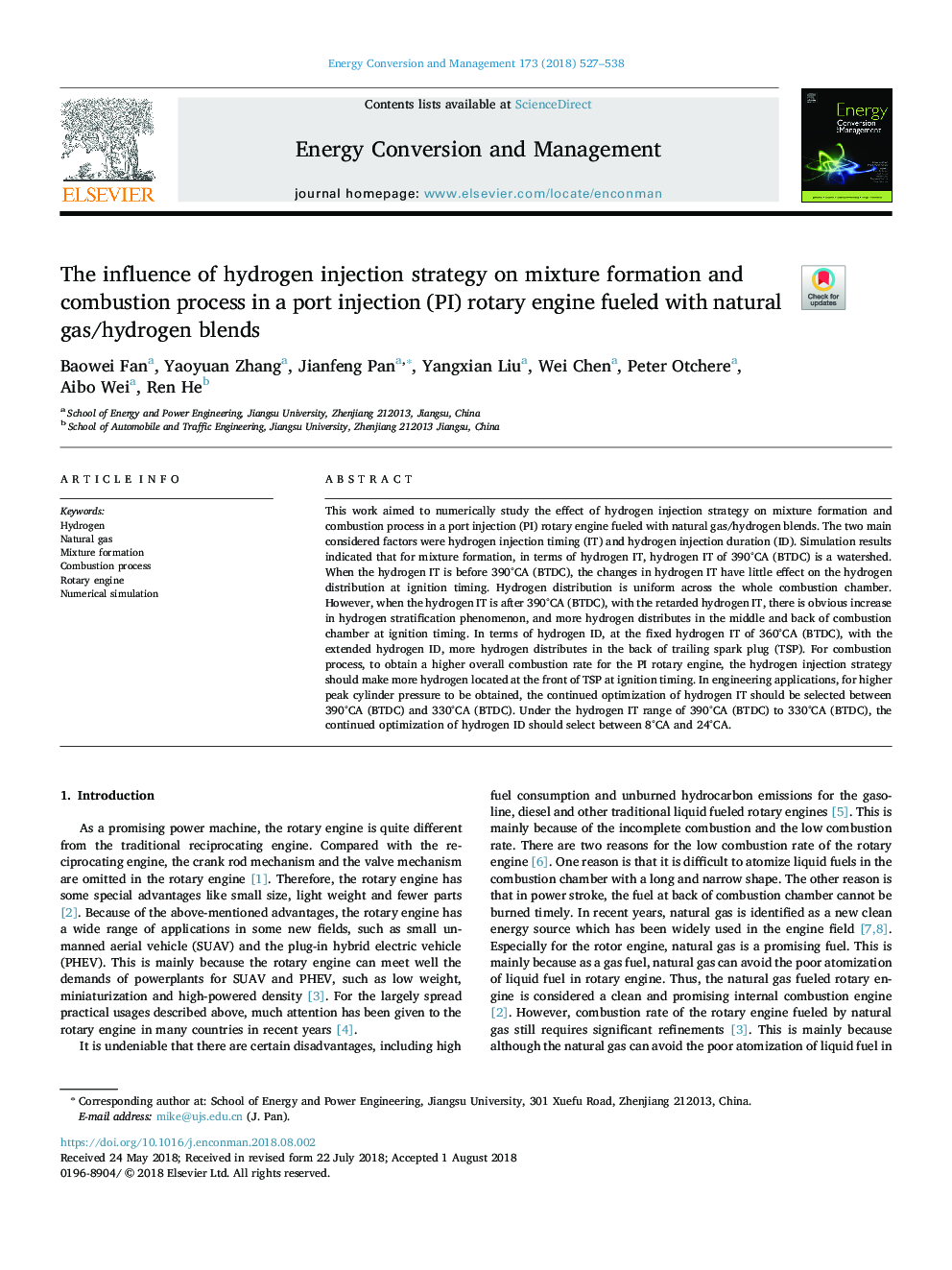| Article ID | Journal | Published Year | Pages | File Type |
|---|---|---|---|---|
| 7157859 | Energy Conversion and Management | 2018 | 12 Pages |
Abstract
This work aimed to numerically study the effect of hydrogen injection strategy on mixture formation and combustion process in a port injection (PI) rotary engine fueled with natural gas/hydrogen blends. The two main considered factors were hydrogen injection timing (IT) and hydrogen injection duration (ID). Simulation results indicated that for mixture formation, in terms of hydrogen IT, hydrogen IT of 390°CA (BTDC) is a watershed. When the hydrogen IT is before 390°CA (BTDC), the changes in hydrogen IT have little effect on the hydrogen distribution at ignition timing. Hydrogen distribution is uniform across the whole combustion chamber. However, when the hydrogen IT is after 390°CA (BTDC), with the retarded hydrogen IT, there is obvious increase in hydrogen stratification phenomenon, and more hydrogen distributes in the middle and back of combustion chamber at ignition timing. In terms of hydrogen ID, at the fixed hydrogen IT of 360°CA (BTDC), with the extended hydrogen ID, more hydrogen distributes in the back of trailing spark plug (TSP). For combustion process, to obtain a higher overall combustion rate for the PI rotary engine, the hydrogen injection strategy should make more hydrogen located at the front of TSP at ignition timing. In engineering applications, for higher peak cylinder pressure to be obtained, the continued optimization of hydrogen IT should be selected between 390°CA (BTDC) and 330°CA (BTDC). Under the hydrogen IT range of 390°CA (BTDC) to 330°CA (BTDC), the continued optimization of hydrogen ID should select between 8°CA and 24°CA.
Related Topics
Physical Sciences and Engineering
Energy
Energy (General)
Authors
Baowei Fan, Yaoyuan Zhang, Jianfeng Pan, Yangxian Liu, Wei Chen, Peter Otchere, Aibo Wei, Ren He,
